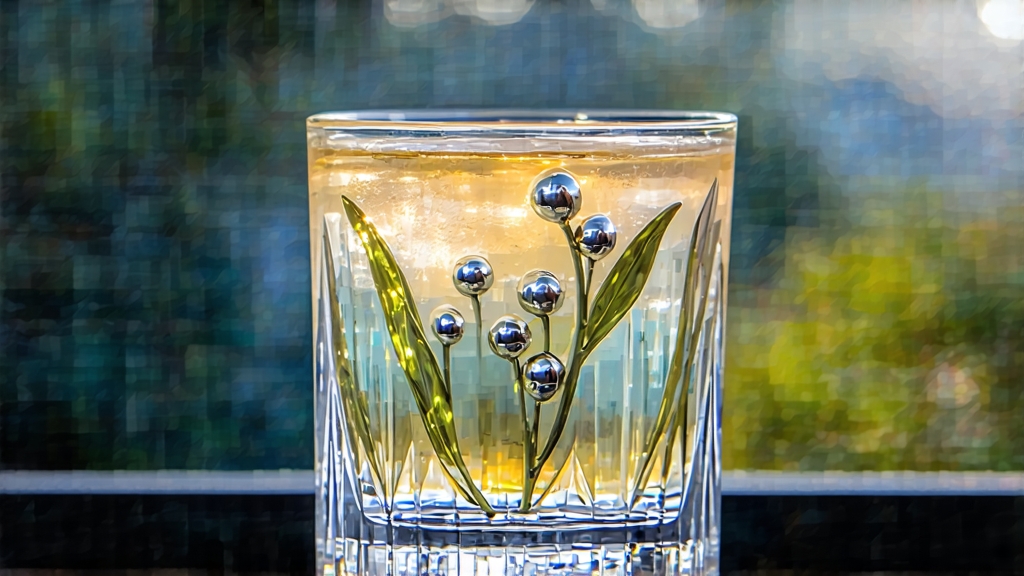
If green tea is the exuberant youth of Chinese tea culture and pu-erh its contemplative elder, then Bai Hao Yin Zhen—literally “White Hair Silver Needle”—is the moonlit poet who arrives quietly, stays briefly, and leaves every listener changed. Harvested only for a few spring mornings, this most aristocratic of white teas carries within its down-covered buds the coastal mists of northern Fujian, the whispers of Song-dynasty tea monks, and a flavor so subtle it seems to vanish just as you grasp it. For international drinkers accustomed to the swagger of Assam or the smoke of Lapsang, Yin Zhen offers a different grammar of pleasure: silence, phosphorescence, and the taste of fresh mountain air solidified into silk.
History: From Imperial Tribute to Global Muse
The first written record of “white tea” appears in Song emperor Huizong’s 1107 treatise Daguan Chalun, where he praises its “jade-white down and cooling nature.” Yet the cultivars that would become Yin Zhen—Fuding Da Bai and Fuding Da Hao—were not selected and named until the late eighteenth century, when tea merchants near Taimu Mountain noticed that the fattest spring buds, once air-dried, developed a silver sheen and a honeyed aroma that lasted through long caravan journeys to the courts of Beijing. By the Qing dynasty the tea was pressed into small cakes, wrapped in rice paper stamped with the imperial five-clawed dragon, and shipped north as tribute. European diplomats encountering it in 1793 at the court of Qianlong left dazzled descriptions of “pearls that dissolve into light,” and for decades Yin Zhen remained a diplomatic gift more than a commodity. Only after 1891, when the Port of Fuzhou opened to foreign trade, did silver needles begin to reach London, Vienna and Saint Petersburg, where they were displayed under glass cloches like botanical jewels. Today, limited lots are air-freighted to Tokyo, New York and Melbourne, but the tea is still weighed in grams rather than tons, preserving its aura of lunar rarity.
Terroir: Where Granite Meets the East China Sea
Authentic Yin Zhen is produced in a narrow 30-kilometer radius around three villages—Dian Tou, Guan Yang and Pan Xi—situated at 200–400 m elevation in Fuding county. The soil is a coarse, acidic granite-sand mix that heats quickly at dawn yet drains fast, forcing the tea bush to store amino acids in its first flush. More decisive is the maritime climate: the East China Sea lies only 45 km away, so spring nights are blanketed by fog that slows photosynthesis and elongates the bud, while daytime sea breezes lower leaf temperature, concentrating fragrant volatiles. Locals say the buds “sleep in mist and wake in salt wind,” a poetic way of describing the diurnal temperature swing that can exceed 10 °C in April. Because the tea is minimally processed, every environmental nuance survives in the cup, making provenance as important as vintage for wine.
Harvest: One Dawn, Two Leaves, Zero Tolerance
The picking window opens when the last spring frost has passed and the first swallowtail butterflies appear—usually between March 15 and April 10. Only the unopened bud and the first two leaves are taken, and pluckers must snap the stem with a sideways flick that avoids bruising the tissue. Experienced crews work in pairs: one picker, one quality controller who discards any bud shorter than 2.5 cm or lacking the requisite ivory color. A full day’s labor yields barely 500 g of fresh leaf, which shrinks to 100 g after drying. To put that in perspective, crafting one kilogram of finished Yin Zhen demands the dawn-time effort of forty pickers, the reason top-grade lots retail for well over a thousand dollars a pound.
Craft: The Art of Doing Almost Nothing
White tea’s minimalism is deceptive; doing almost nothing requires doing everything at precisely the right moment. Once baskets arrive at the farmhouse, the buds are spread on bamboo trays only one layer deep and left to wither for 36–48 hours in a naturally ventilated loft. No rolling, no pan-firing, no oxidation flip—just stillness governed by micro-weather. The goal is to reduce moisture to 8–10 % while preserving the oxidative enzymes that will generate honey and stone-fruit notes during the ensuing six-month “